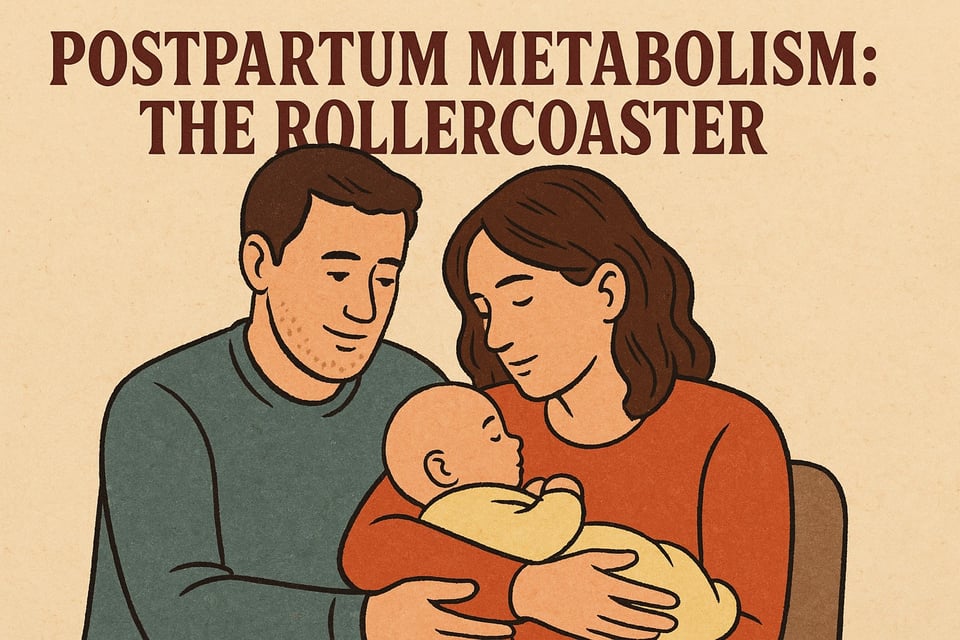Postpartum and Pre-diabetic? Here’s what’s really going on.
This edition unpacks the rollercoaster of postpartum metabolism and practical tips for recovery.

Hello folks, welcome to BTS Weekly.
Today, we’re diving into something that often flies under the radar: the complex, complicated world of postpartum metabolism.
Let’s say someone close to you just had a baby—or maybe you did. Things were looking stable. Maybe their HbA1c was on track, or even trending toward “normal.” And then—bam. Spikes. Fatigue. More cravings. Less time. Less sleep. Suddenly, it feels like they’re sliding in the wrong direction.
What’s going on?
🔄 Postpartum metabolism is not a reset button—it’s a rollercoaster.
After delivery, the body goes through a complete hormonal detox. Estrogen and progesterone levels plummet. Cortisol (your stress hormone) creeps up. And insulin sensitivity? That can go either way—especially if you’re short on sleep or still healing. One study explores how insulin sensitivity and secretion shift post-delivery.
Breastfeeding throws another twist into the mix—it increases energy demand, which can improve glucose for some, but cause wild hunger swings for others. Research by Kaiser Permanente shows that fully or mostly breastfeeding women tend to have lower blood sugar levels.
🧠 Here’s the kicker: even without gestational diabetes, many women enter a kind of “silent risk zone” post-birth. HbA1c creeps up. Glucose spikes last longer. And the hardest part? You’re so busy surviving, you don’t even notice. This study shows that postpartum weight loss is linked to better glucose metabolism—something many miss.
🍽️ So what helps? When you’re already maxed out?
We’re not here to throw you another “eat better and move more” pep talk. You already know that. The real question is: what can you actually do when you’re running on fumes?
Here’s what we’ve seen work for many women:
✅ Prioritize what you add, not what you cut.
Add protein to breakfast. Add fiber to dinner. Add one walk a week. Start with addition, not subtraction.
✅ Anchor your carbs.
That muffin? Pair it with an egg or nuts. It helps slow digestion and dampen the spike.
✅ Don’t underestimate stress.
Ten minutes of quiet time—yes, even if it’s just sitting alone for a bit—can help lower cortisol and improve your glucose response. There’s science behind this.
✅ Notice patterns, not numbers.
You don’t need to log every bite. Just observe: “That cereal alone made me crash, but adding yogurt helped.” That kind of awareness builds over time.
🎯 And if you’re the partner or support person reading this…
Helping someone recover postpartum isn’t just about taking night shifts. It’s about understanding that the healing isn’t just physical—it’s metabolic, hormonal, and cognitive. Judging the food choices? Not helpful. Offering a snack, a nap, or some silence? Very helpful.
Thanks for tuning in. We’ll be back next week with more real-talk metabolic insights.
Oh, and if you’re ever looking for a little help anticipating how a meal might affect your glucose—especially when you don’t have time to analyze it all—GlucoSpike AI might be worth checking out. It’s not a CGM replacement, just a smart sidekick.
Until next time,
—Team GS
